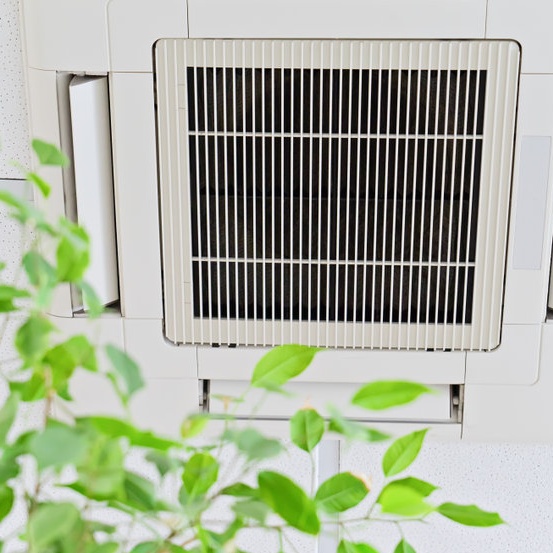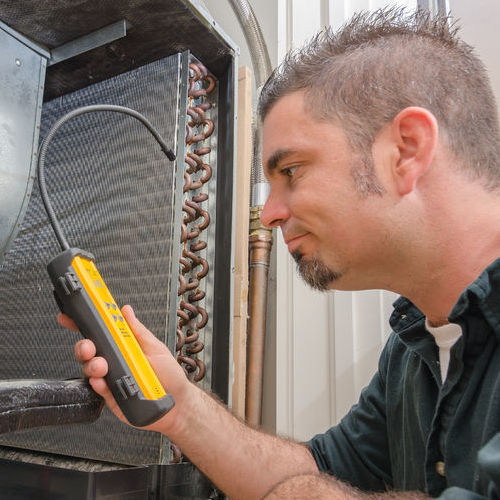
Why is my AC not working?
August is not the time for the air conditioning to stop working! But if it does, don’t panic. You can call for emergency AC repair right away. Emergency central AC repair is not cheap, though – you’re looking at perhaps $150 an hour with a two-hour minimum, plus parts and labor. However, it is often necessary, though there are a few things you can check on your own for free that may get it blowing cold again.
So before you pull out that emergency-only credit card, read on as we answer a few questions that will include some tips and tricks to use. Save the money you’d spend on your emergency air conditioning repair cost for your next plumbing catastrophe, instead. And if those things don’t work, you can count on the Aire-Rite Heating & Air Conditioning, Inc. team for emergency AC repair in Riverside, CA by calling (951) 336-1541.
Why isn’t the AC working in my house?
Even the highest quality air conditioners can have issues that keep them from working, not that this makes you any less hot when it’s yours that isn’t working. There can be a number of things that could be why your AC isn’t working, and we’re going to review them with things you can check yourself before you call a 24-hour emergency ac repair service.
Check the following things before making that call:
- Make sure the unit is plugged in: This may seem like a no-brainer, but you never know if somebody else unplugged it to use the outlet, or if the plug might have fallen out. If the plug falls out, you’ll need to get an electrician to replace that outlet for safety reasons. If it is plugged in and secure, check the circuit breaker. It may have tripped and simply need to be reset. Meanwhile, if your air conditioner is constantly tripping, call an electrician to inspect the circuit breaker.
- Check the thermostat: Again, this may seem like a no-brainer, but it is often the simplest of things that cause the biggest headaches. Replace the batteries and make sure it is set to cool and on. Move the temperature setting down about five degrees and see if it kicks on then. If this doesn’t work, keep following our tips before you make that expensive emergency ac repair phone call.
- Check the outdoor condenser: If the air conditioner isn’t blowing cool air, check the outdoor component, also known as the condenser. If there is debris, grass, trash, and weeds sucked up against it, it might not be able to get enough outdoor air to work. There should be a minimum clearance of three feet to give the condenser optimum airflow. Once you have that area cleared out, let the air condition system run for two to three hours and see if the air gets cold. If it doesn’t and the rest of these tips don’t help, you’ll need to make that emergency ac repair phone call.
- Check the air filter: You should be changing or cleaning the air filter no less than every 30 days, but we get it. Life is busy, and before you realize it, it has been 60 days, and then 90 days, etc. So check the air filter and change it or clean it, depending on what type you have. Allow the system to run for two to three hours and see if it gets any cooler. If not, well – we are at the end of DIY tips, so you’ll have to call for an emergency ac repair service.
What if my AC isn’t blowing cold air?
If your air conditioner isn’t blowing cold, before you make an emergency air conditioner repair service call, follow these troubleshooting suggestions. Many of these are the same as situations when your AC isn’t working at all:
1. Thermostat Settings are Wrong
When an air conditioner isn’t blowing cold, it could be an issue as simple as the thermostat setting. Check the settings – they should be on “cool” and “auto”. Next, lower the temperature by five degrees and see if it starts getting cold.
2. Air Filter is Dirty
Check the air filter, even if you have recently changed or cleaned it. It may have sucked up some excess debris that is impeding the airflow. Change it out or clean it and give it a few minutes to see if that helps.
3. Leaked Refrigerant
Your air conditioner needs refrigerant to cool and if it has leaked out, it may not have enough in it to do the job. Bear in mind this problem will need a professional air conditioning technician to recharge the system since refrigerant is controlled by certain laws. If it is a miserable, hot and humid day, make that emergency ac repair phone call. It’ll be worth the cost.
4. Leaking Air Duct
The cooled air your air conditioner creates travels through air ducts before it gets to the vents in each room. As time passes, air ducts will become loose and dislodged, and if there have been any critters in your attic such as mice or squirrels, they may have gnawed through them. You’ll need to get professional service to inspect the ducts and make any necessary repairs or replacements.
5. Evaporator Coils are Dirty
The evaporator coils on your air conditioner will get dirty over time, which can affect the performance of your air conditioning system. The evaporator removes the hot air and cools it down with the refrigerant. Cleaning the evaporator coils should be done by an experienced professional. Again, if it is blistering hot and humid, make that emergency ac repair call.
6. The Circuit Breaker
Check both circuit breakers, the one inside the box and the one outside by the condenser. If they are tripped, flip them back on, making sure the thermostat is in the ‘on’ position and your air conditioner is plugged in as well. If they trip again right away, you need to make that emergency ac repair phone call ASAP.
Why is my AC not cooling well?
It sounds like we’re on a recording, but all the things we’ve mentioned already can affect how cool the air from your air conditioner is getting. However, there are two additional factors that need to be checked:
- The Compressor – This component is responsible for keeping the refrigerant at the right pressure. Without the compressor working right, the air conditioner isn’t going to cool.
- An Old System – Your air conditioner may have reached the end of its life. A good quality central air conditioner will give you up to 15 to 20 years of service if you maintain it and have it professionally serviced. If you have had it serviced more than twice in the last year, you should probably start shopping around for a new unit.
What do I do if my air conditioner isn’t blowing cold air?
Follow these 5 steps and see if it starts blowing cold. If it doesn’t, schedule your emergency ac repair appointment:
- Check the Thermostat Setting
- Replace or Clean the Air Filter
- Inspect the Condenser Unit
- Change Batteries in Thermostat
- Check the Circuit Breakers (inside and outside)

In Closing – How do I know if my AC is broken?
First, you can follow the steps we’ve provided in this piece to make sure there aren’t any simple solutions to your AC issues. If none of these work, you’ll need to make that emergency ac repair phone call. Five indications that you’re going to need professional service would be:
- Nothing you do is getting cold air blowing.
- There is moisture around the air conditioning system.
- You’re hearing unusual sounds.
- You’ve noticed unusual smells.
- The humidity has been a high level inside the house
If you need emergency AC repair in Riverside, CA, the team at Aire-Rite Heating & Air Conditioning, Inc. is ready to give you the help you need as soon as you call at (951) 336-1541.


















